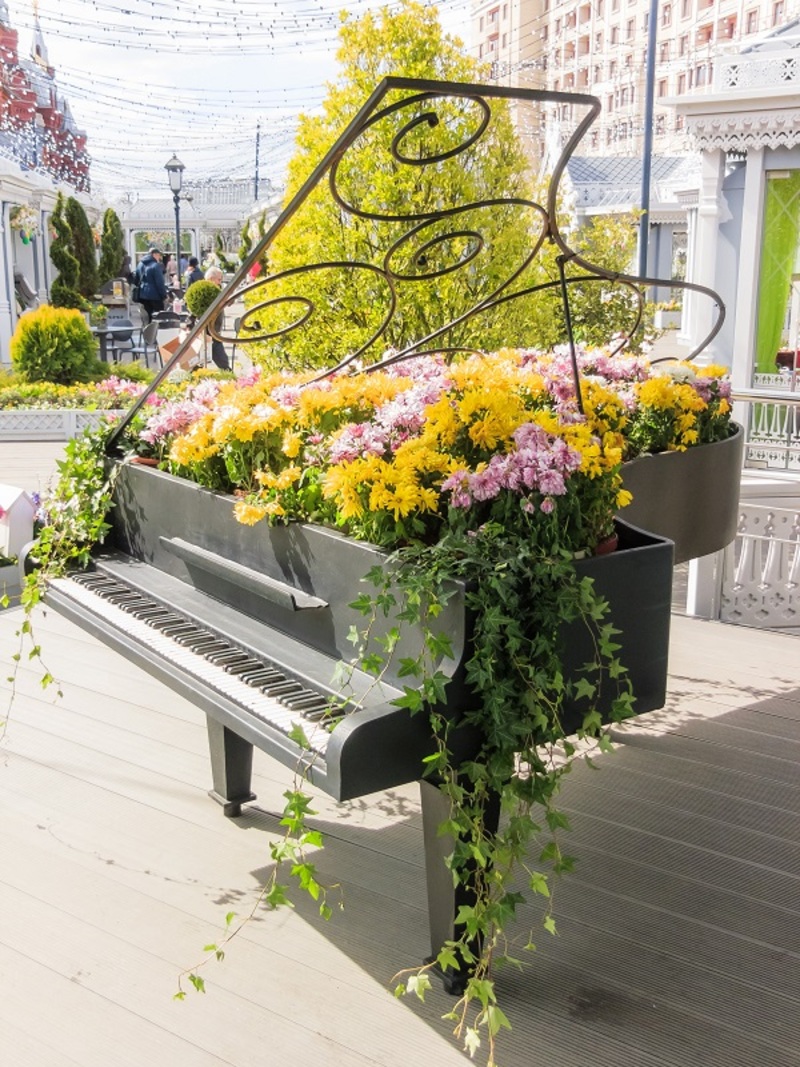Mastering Hydrangea Care: A Guide to Lush Blooms
Posted on 03/07/2025
Mastering Hydrangea Care: A Guide to Lush Blooms
When it comes to classic garden beauty, hydrangeas reign supreme. Their large, vivid blossoms add drama and charm to landscapes around the world. If you're passionate about cultivating vibrant, healthy hydrangeas, you're in the right place. This comprehensive guide to hydrangea care explores everything you need to know--planting, pruning, troubleshooting, and more. Discover expert strategies for growing hydrangeas that overflow with color and lushness all season long.
Understanding Hydrangeas: Types and Traits
Before mastering hydrangea care, it's essential to know your plant. Hydrangeas (family Hydrangeaceae) are a diverse group of shrubs and climbers, each with distinct features and needs. Let's explore the most common types:
- Bigleaf Hydrangea (Hydrangea macrophylla): Famous for their domed (mophead) or lacy (lacecap) blooms. Flower color can shift between blue, purple, and pink based on soil acidity.
Best for gardeners who want to play with bloom color. - Panicle Hydrangea (Hydrangea paniculata): Known for their cone-shaped clusters, these robust shrubs bloom white, turning rosy pink as the season progresses.
Excellent for cold climates and sun tolerance. - Smooth Hydrangea (Hydrangea arborescens): Hardworking natives with frothy white (sometimes pink) blooms. These tough plants thrive in a range of soils and are reliable bloomers.
Ideal for beginners and difficult sites. - Oakleaf Hydrangea (Hydrangea quercifolia): Name comes from their distinctive, oak-like foliage that turns red and purple in fall. Their elongated blooms are a garden standout.
Great for shade and naturalizing areas. - Climbing Hydrangea (Hydrangea anomala petiolaris): A stunning vine with fragrant white clusters, perfect for trellises or shaded walls.
Best for vertical interest in shady spaces.
Which Hydrangea is Right for You?
Consider your garden's light conditions, climate, and design goals when choosing a hydrangea variety. Bigleaf hydrangeas favor partial shade and moderate climates, while panicle and smooth types handle more sun and colder zones. Oakleaf hydrangeas are a woodland favorite due to their shade tolerance and fall color.

Planting Hydrangeas for Success
Proper planting forms the foundation of lush, healthy hydrangea growth. Follow these steps to set your hydrangeas up for spectacular blooms:
Site Selection: Light and Soil
- Light: Most hydrangeas thrive in morning sun with afternoon shade, especially in hotter regions. Panicle hydrangeas are the exception--they love full sun.
- Soil: Choose well-drained, rich soil enriched with organic matter. Hydrangeas dislike soggy roots, so avoid low-lying or poorly drained spots.
Planting Steps
- Dig a hole twice as wide but no deeper than the root ball.
- Mix compost or well-rotted manure into the planting soil.
- Set the plant so the top of the root ball is level with the ground.
- Backfill, firm the soil, and water thoroughly.
- Mulch 2-3 inches thick to conserve moisture and suppress weeds.
Tip: Plant hydrangeas in early spring or fall for best results.
Ongoing Hydrangea Care: Water, Feeding, and More
Regular, attentive care yields the best blooms season after season. Here's how to nurture your hydrangea shrubs to their fullest potential:
Watering Techniques
Hydrangeas need consistent moisture--their name comes from the Greek for "water vessel"! Water deeply once or twice a week, ensuring soil stays moist but not waterlogged. In extreme heat, check soil frequently and supplement as needed.
- New plantings need extra water their first season.
- Mulch keeps roots cool and retains moisture--refresh it yearly.
- Avoid overhead watering to reduce fungal issues.
Fertilizing for Lush Blooms
While hydrangeas aren't heavy feeders, the right nutrients fuel abundant flowers and healthy foliage.
- Apply a balanced, slow-release fertilizer in spring as new growth emerges.
- Too much nitrogen causes leafy growth at the expense of blooms. Use a product blended for flowering shrubs.
- For better color on bigleaf hydrangeas, add aluminum sulfate (for blue) or garden lime (for pink) based on your desired shade.
Pruning Hydrangeas the Right Way
Correct pruning is crucial for hydrangea vitality and bloom performance. Different types require different approaches:
- Hydrangea macrophylla & quercifolia: Bloom on "old wood." Prune only after flowering, removing spent blossoms and weak stems. Avoid heavy fall or spring pruning--this cuts off next year's blooms.
- Hydrangea paniculata & arborescens: Bloom on "new wood." Prune hard in late winter or early spring to stimulate fresh flowering stems.
Tip: Always use clean, sharp shears, and remove no more than one-third of the plant at a time.
Changing Hydrangea Color: The Science & Technique
A unique feature of bigleaf hydrangeas is their ability to change color based on soil pH. Other hydrangeas will not change color.
- Blue flowers: Soil should be acidic, pH 5.0-5.5. Apply aluminum sulfate.
- Pink flowers: Soil should be alkaline, pH 6.0-6.5. Add garden lime.
- This process is gradual--changes may take several months or even a full growing season.
Test your soil first! Overdoing amendments can harm your plant. Remember, white hydrangeas (like paniculata or arborescens) always stay white.
Seasonal Hydrangea Care Tips
Spring
- Remove mulch, prune as recommended, and apply fresh compost or fertilizer.
- Check for frost damage and trim away any blackened stems.
Summer
- Water consistently, especially in heatwaves.
- Deadhead spent blooms to encourage continued flowering (except for late-season bloomers if you want decorative seed heads).
Autumn
- Stop fertilizing to avoid frost-tender new growth.
- Allow flowers to dry for winter interest, or cut for arrangements.
- In cold regions, protect roots with a thick layer of mulch.
Winter
- Hydrangeas are generally dormant, but in very cold zones, wrap shrubs with burlap or cover with leaves to prevent winter injury.
Common Hydrangea Pests and Problems
Healthy hydrangeas are generally pest-free, but be alert for these issues:
- Powdery mildew: White, powdery leaf coating. Improve air circulation and avoid overhead watering.
- Aphids and spider mites: Rinse foliage or use insecticidal soap as needed.
- Root rot: Prevent by planting in well-drained soil and not overwatering.
Tip: Remove affected parts promptly, and ensure good garden hygiene.
Propagation: Growing New Hydrangeas
Want more hydrangeas for free? It's simple to propagate these beauties:
- Cuttings: Take a 4-6 inch, non-flowering stem in spring. Dip in rooting hormone and plant in moist potting mix. Keep covered until roots develop.
- Layering: Bend a low branch to the ground, nick the underside, and cover with soil. Roots will form in a few months, at which point you can sever the new plant and replant elsewhere.
Hydrangea Care FAQs
Why isn't my hydrangea blooming?
- Pruned at the wrong time (removed flower buds)
- Too much shade or overfertilizing with high-nitrogen products
- Late-spring frost damage to buds
How do I revive a wilted hydrangea?
- Water thoroughly at soil level. Mulch to conserve moisture. Remove any dead foliage to reduce stress.
Are hydrangeas toxic to pets?
- All hydrangeas contain compounds that may be toxic if ingested by pets or humans; keep children and animals from eating the leaves, stems, or flowers.

Hydrangea Design Ideas for Stunning Gardens
Hydrangeas work beautifully in a range of garden styles:
- Cottage borders: Combine with roses, salvia, and phlox for a soft, romantic look.
- Woodland edges: Pair oakleaf hydrangeas with ferns and hostas in shady gardens.
- Hedge or privacy screen: Plant panicle or smooth hydrangeas en masse for bold summer color and structure.
- Container displays: Dwarf hydrangeas thrive in large pots for patios and balconies.
Conclusion: Achieving Lush Hydrangea Blooms
Mastering hydrangea care rewards you with bushy, healthy plants that produce breathtaking blooms summer after summer. With the right hydrangea variety, careful planting, tailored seasonal care, and smart pruning, you'll transform your garden into a lush floral paradise. Always pay attention to your plant's unique needs and experiment with design and color for a landscape that's the envy of the neighborhood.
Now that you know the secrets, you're equipped to make your hydrangeas truly thrive. Happy gardening!
Latest Posts
Prolonging the Beauty of Your Poinsettias
Discover the symbolism and color meanings of peony flowers
Discover the colorful secrets of birth month flowers and their meanings
Mastering Hydrangea Care: A Guide to Lush Blooms
Explore the Top 5 Flowers That Speak Love on Valentine's Day






